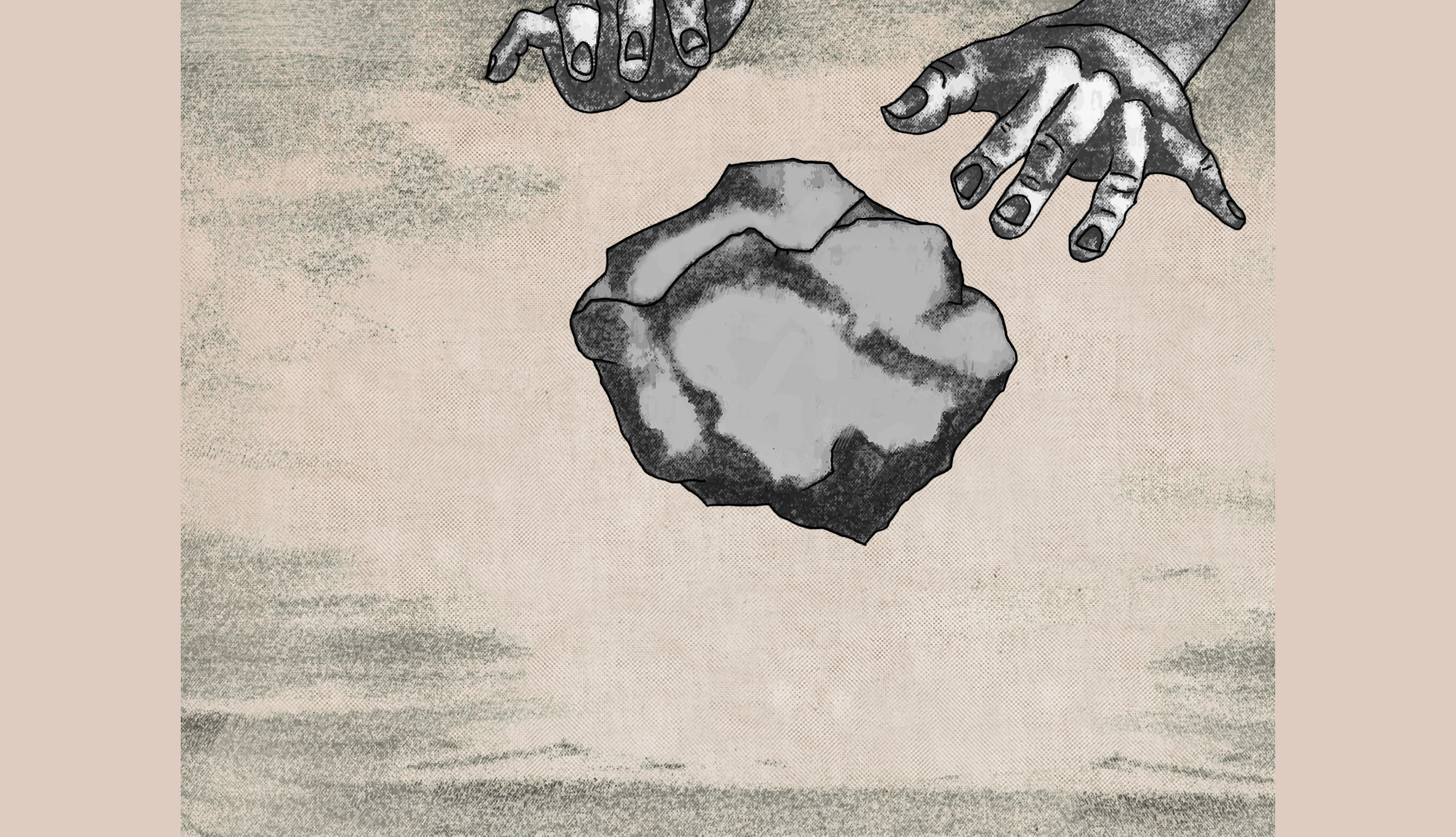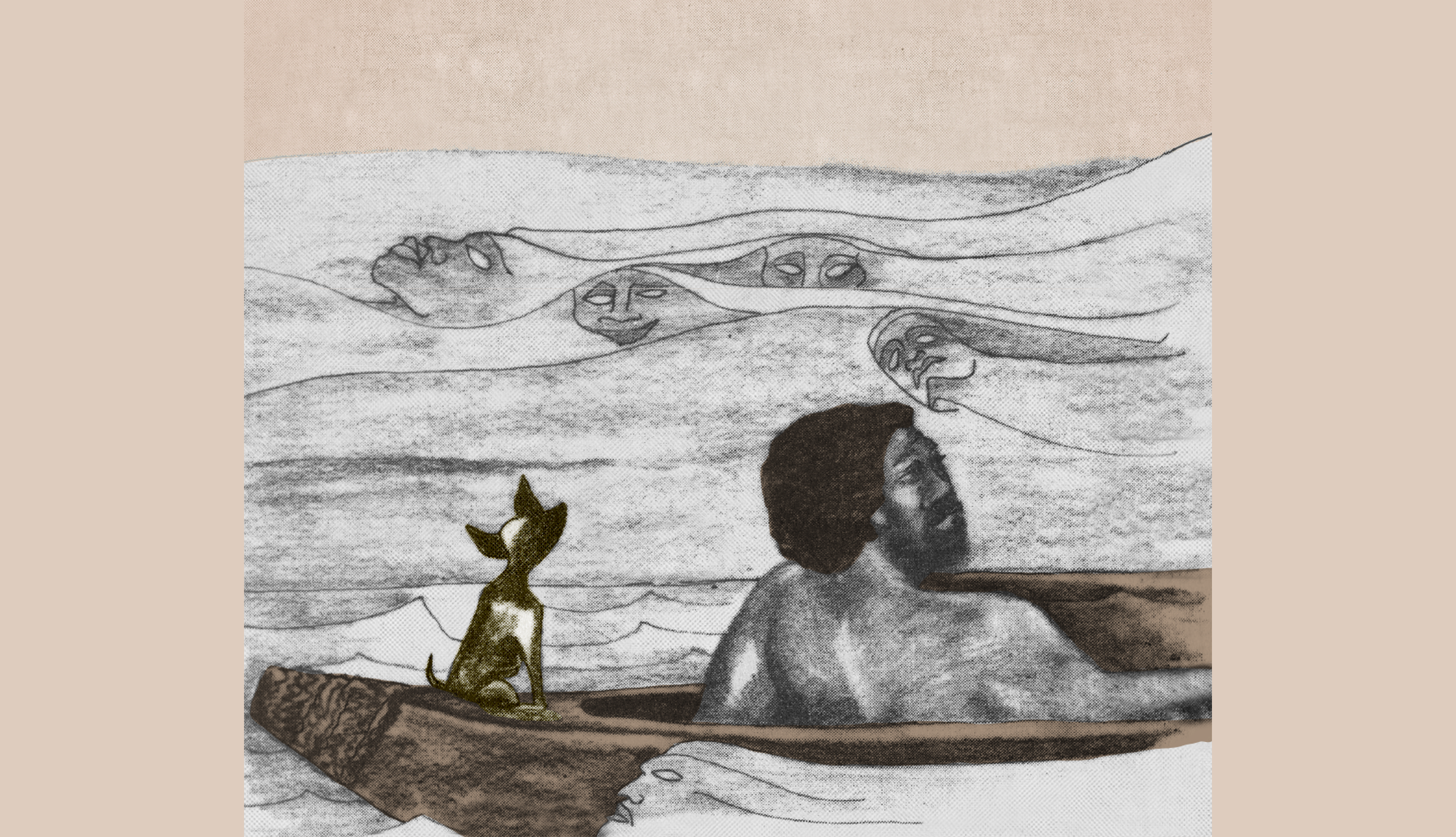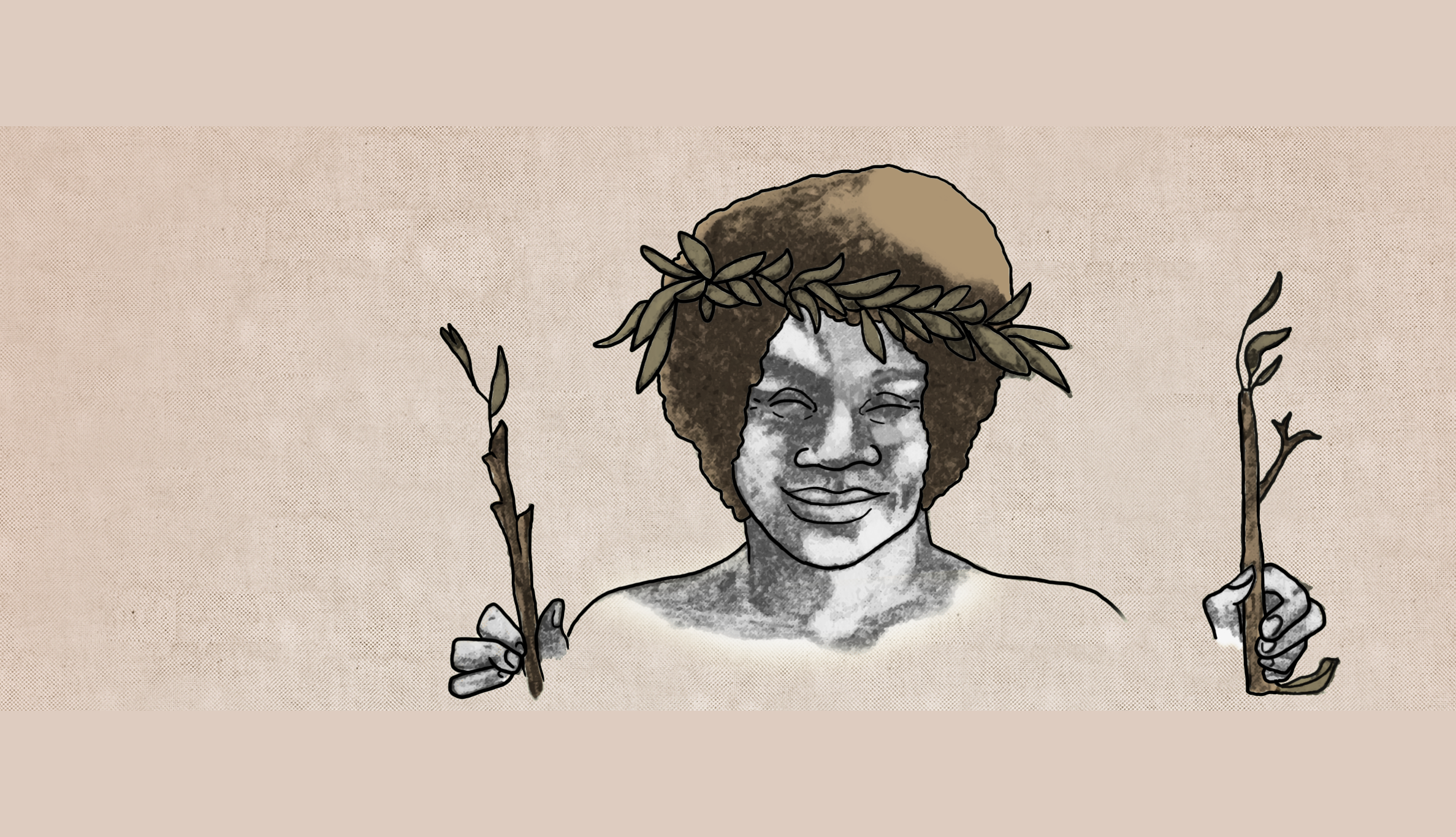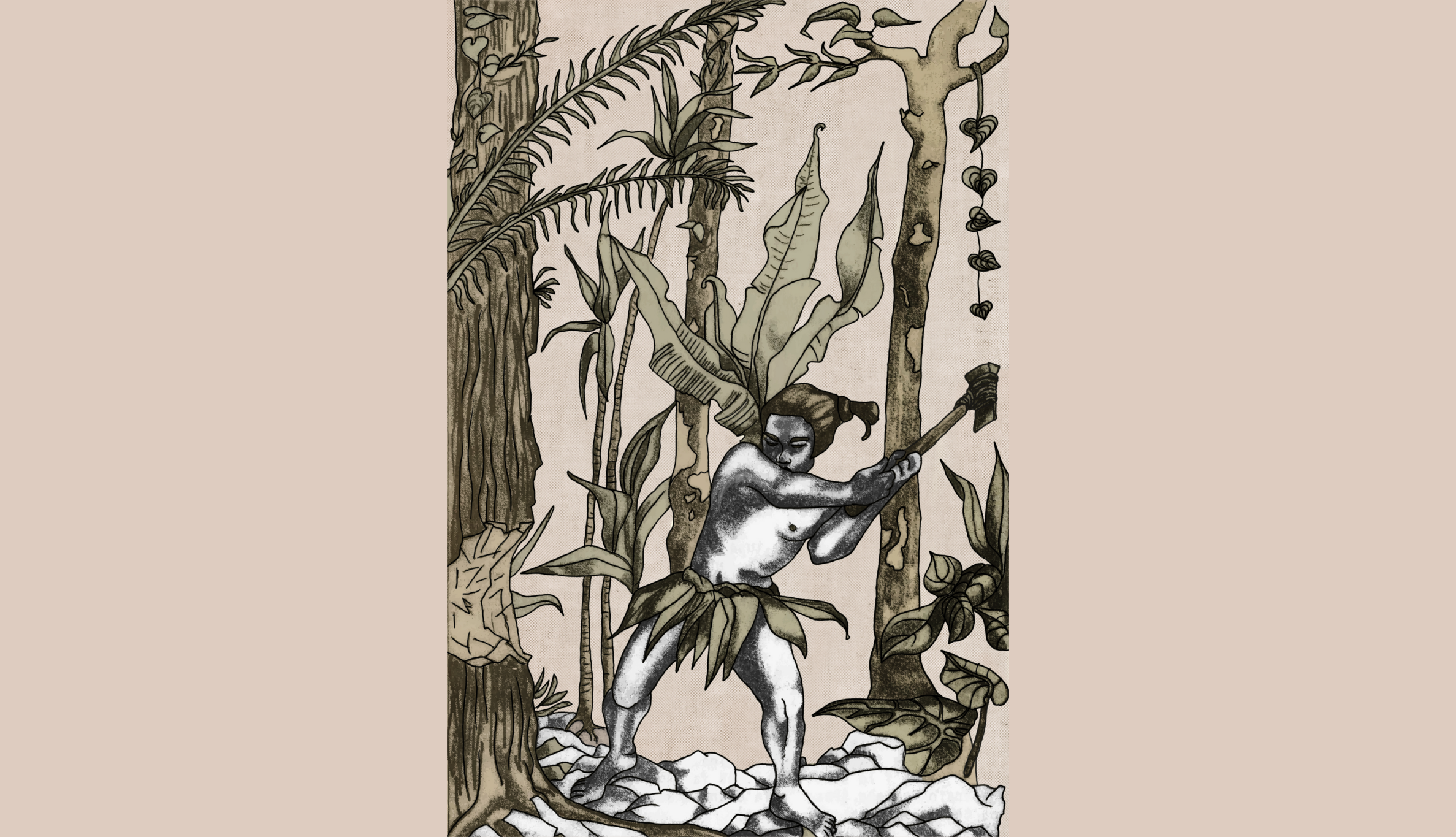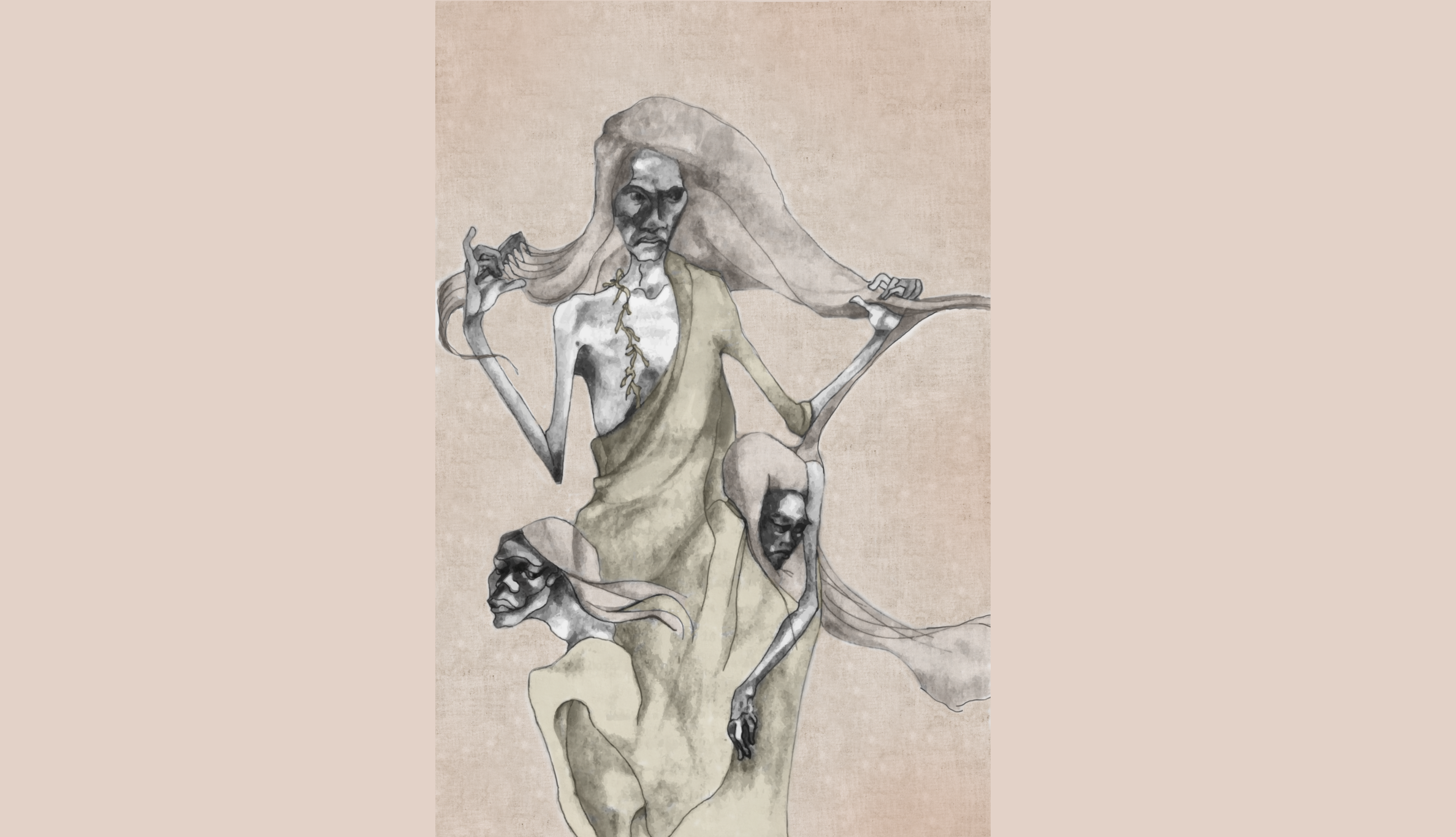
Talaaga Samoa Lafai
The second monograph reproduced by the 1980 American Samoa project was “The History of Samoa,” first written by Brother Fred Henry (1879-1944), the Catholic missionary who was born in Germany and came to Samoa, establishing himself in Leone, where he founded an elite Boys School. His extraordinary work about Samoan history was first published in Samoan, and made available in English in 1979, Commercial Publishers, Ltd. Few first edition copies exist outside of libraries. His work was then republished in 1982 by scholars of the National University in Western Samoa, which edition is known as the “Lambie edition.” We have used this (“Lambie”) edition nearly verbatim. The Bilingual Bicultural Project used the Lambie edition to translate the stories back to Samoan to produce the volume “Lafai” (Brother Fred Henry). We have, of course, not re-translated this “Lafai” edition for you. Instead we have used the illustrations Dotsy created for the Samoan language edition, translated by Fa’asamoana e Moega T. Tuitele in 1980 titled “‘O se Tala’aga o Samoa” and attached these to the text of the Lambie edition.
The Creation
As Brother Fred Henry points out in the Lambie edition of History, (pp. 18) the Samoans believed Samoa was the whole earth. Like philosophers everywhere throughout history, some emphasized the physical creation… more
Souls Traveling to Pulotu
While the scholars will search feverishly to uncover the precise origin of the Samoan people, and chart the paths of their migration to Samoa, others unquestionably accept what Brother Fred Henry writes, i.e. there was no migration at all, since… more
The Story of Maui
One day, Maui met a woman. Immediately he felt sure that she was his true mother. He told her this, knowing he would have to convince her, since, by discarding him in the first place, she would believe it impossible that he could be alive. But it was not long until… more
The Story of Lata o Rata
Lata, who lived about A.D. 860 was the son of Fafieloa and Tula. The father of Fafieloa was Tavai who lived in Pago Pago. Fafieloa had been killed by a Chief named Matu’uta’ota’o who lived in Fogatuli on the southwest coast of Savai’i… more
The Bats Save Leutogitupa’itea
Brother Fred Henry’s truncated version of this story is retold here: Many unanswered questions appear, first of all, why did all this horror happen? For that we must look beyond to two other scholars… more
Sina and Pili
Two very chaste versions of the Pili story are given by Brother Fred Henry, one from the Manu’a Islands and the other from Western Samoa. The second version is told differently, so both of those are presented. It is important to recall that at an earlier time… more
The Sons of Pili
According to Brother Fred Henry, Pili and his sons lived between 850 and 950; their reign was ended with the arrival of the Tongan invaders whose hegemony prevailed for 300 – 500 more years. The organization of Upolu is attributed to Pili… more
Fe’epo and Atiogie
Two stories describe how Atiogie, of the Malietoa line, shows his bravery and kindness to his father Fe’epo when Fe’epo “had become old, blind and sick. In fact, he was a cripple”… more
Atiogie’s Kindness
As an example of his kindness, the story is told that Atiogie knew his father liked to eat yams(ufi). So he went out one Monday morning and brought in some fine yams… more
The Tuna, Fata and the Tongan Wars
Although the first Tongan rulers, beginning in 950 with Asoaitu, treated the Samoans with kindness, this good fortune changed abruptly when Tala’aifei’i became King of the Tongan Empire. He was uncommonly cruel and believed to have been a cannibal… more
The Tongan War in Tutuila
Word quickly spread to Tutuila of the Samoans longing for defeat of the Tongans at Safotu and Aleipata. The islanders of Tutuila had begun to resolve, to rid themselves of the Tongan rulers there as well, but they were afraid… more
The Kings of Tonga and Manu’a
The Tuitonga (King of Tonga) Fakapouri was a great friend of the Tuimanu’a (King of Manu’a), who then lived in Fitiuta. On account of their mutual friendship, they often visited each other. On one of his regular visits to Fitiuta, Fakapouri said:… more
Malietoafaiga Renounces Cannibalism
In background, this is the second of two stories about Malietoafaiga, the chief who inherited the Malietoa title and held sway over Western Samoa (The first being The Turtle and the Shark). This chief was known throughout the lands for his cruelty, since he had adopted… more
Malietoa La’auli
When Malietoafaiga died, he was succeeded by his son Uitualagi, who took the Malietoa title. Uitualagi is not known for much more than having been the husband of Gatoloaiaoolelagi (Gatoloai). Uitualagi and Gatoloai had two sons and a daughter. The eldest child, La’auli… more
Alo and the Giant Fish
It has already been mentioned that Safata was founded by Fata the son of Atiogie. In accordance with the last will of his father, his establishment was to act as Alataua. Later Safata became a district of Tuamasaga. It consisted of two parts Alataua and Satunumafono… more
Sanalala the Forgotten Child
At the time, the two famous girls Gato’aitele and Gasoloaiaoolelagi were born to La’auli, the boy Sanalala was born at Safata. He was the son of Fitimaupologa, a daughter of Tuitoga. His father was Samoanagalo. As this boy became… more
Sanalala and Folasaitu
Meanwhile, Gatoaitele and Gasoloai the daughters of La’auli had grown up, and stories about their beauty and mutual love had spread far and wide. Suitors came from all parts of Samoa to Fale’ula to woo and win these girls… more
Tamaalelagi’s Tattoo
When Alipia and Suluga, a high talking chief of A’ana, had accepted the offer of Tutuila and Ape to take over the care of the young Tamalelagi, so that he might grow up to become the leader of the whole district, Ape said:… more
Nafanua Goddess of War
Since this famous goddess plays an important role in the following tribal wars, it will be well to know something more about her. Nafanu was the daughter of Savea Siuleo and an ancestor of Tonumaipe Sauoaiga… more
War in Atua
In these passages, Brother Fred Henry focused on the historical documentation of the wars of succession. Since these are of paramount importance, especially where Tongan domination was resisted, and the Tongans were ultimately… more
Tamalelagi: Child of Heaven
Recall that Tamalelagi was the son of Selaginato and Vaeotamasoa, the daughter of Sanalala. We have also seen that the high title of A’ana had been conferred upon him while he was only a youth, though at that time the Tuia’ana title was already held… more
Gathering Clouds
Malietoa Sagagaimuli, the son of Malietoa Falefatu, watched, and not without anxiety the growing influence of Tamalelagi. He had not approved of his marriage with a daughter of Folasaitu, for he well knew that in case of war he could not rely on the… more
War Against Malietoa
The oracle’s pronouncement was no sooner made public than Tamalelagi and his Falefitu prepared for war. Messengers (savali) were despatched to all parts of A’ana, bidding the chiefs to assemble in Leulumoega two days after darkness had set in… more
The Feast of the Fe’e
It was earlier noted that our war god takes the shape of the fe’e (octopus) when at sea, the form of a white shell (pule) when he comes on land, and that of a soldier crab (uga) when he lives on a mountain. “Finally, the great day dawned… more
The Assasination of Mata’utia
Mata’utia was the son of Lalovimama and Sefa’atauemana and had become the Tuiatua.Now that he was Tuiatua, his old friends Leifi and Tautola determined to find him a wife, and after much thought and planning, they decided the most favorable… more
The Giant Vaea
Vaea was a giant who lived behind our village. One day he insulted the Tuifiti (King of Fiji). The enraged king sent his four sons with the order to kill the giant, but their ship was so large that it could not enter the harbor… more
Salamasina: Official Adoption
After the assasination of her husband Matautia and loss of her child, the heartbroken Sooa’e (Sooa’emalelagi) sailed home, reaching the home of her cousin Tamalelagi by sunset. She took up residence in the guest-house at Leulumoega on the… more
Salamasina’s Installation as Tuiaana
The preparations for the ceremony of installation were completed without delay. On the appointed day, Salamasina, beautifully arrayed, took her place on a throne of fine mats erected in the round end of the official meeting house Nuuausala… more
Salamasina’s First Love Alipia
Salamasina, as we have seen, was the first one who held the four titles which constituted her “Tupu of Samoa,” Queen of Upolu, Savai’i and Tutuila. Most of the future kings descended from her and belonged to the Tuia’ana line… more
The Infant Tupumanaia is Stolen Away
A year had passed by and the Queen presented her husband with a boy. As there was no doubt that the child was his, he gave him his own name Tapumanaia. The birth of this boy was hailed as a great and joyful event… more
Sina and The Tongan Subterfuge
Atua is the name of the eastern part of Upolu. Tuiatua Togiai, the victor of the war of succession, had established his residence at Foganiutea in Fagaloa. His grandson had lived, as we have seen, in Saleaumua in the Aleipata district… more
The Revenge of Sooa’e
Sooa’e, though satisfied with the manner Salamasina had treated Ulualo and his men, was anxious to lay her hands on Leifi and Tautolo. To this effect she had secretly sent out some of the Musumusu warriors to capture them, but somehow the astute orators escaped… more
Salamasina’s Last Years
After her mother’s departure, Salamasina felt very lonely. Her husband Tapumanaia spent most of his time in far off Satupaitea, where he felt more at liberty to carry on his former dissolute life. Yet he never forgot his duties entirely… more
Savaii Became Populated
Pulotu is the name of an island in the West and Papatea an island in the East. Elo, the King of Pulotu, had four children: Ua (neck), Fali (long grass), Lagi (heaven), and Tala (tale)… more
Organization of Savaii
It has already been stated how Pili came from Manu’a to Savai’i, where he settled in A’opo. One of his descendants is Alali or Lealali. It is to Lealali that many traditions point as being the progenitor of those chiefs who founded… more
Origin of Lilomaiava Name
The ancestors of the Lilomaiava family are Leali’ifanovalevale of Palauli and Fililesalue, the daughter of Tui-Atua Fa’aso’utele. Their grandson Tuiavi’i married Siaposuisui, a daughter of Pei in Sagafili… more
Malietoa’s Forbearance
With the arrival of the Europeans, the chiefs and other leaders often formed allegiances and factions to achieve supremacy in leadership, and often allied themselves with the Europeans, especially as the two great personages… more
Relations with Fiji
The connection between Samoa and Fiji is just as certain as that with Tonga. Names of places and of persons still in use, testify to the presence of Fijians, and the blood of certain Samoans can yet be traced to Fiji. Importantly, the art of tattooing… more
Tupuivao Loses the Title
The controversy over the right of kingship at Aana and Atua between factions loyal to either Mataafa or Malietoa surfaced with the Will of Queen Taufau which barred her son Tupuivao and his descendants because of his disrespect and disregard for here… more
The War of King Fonoti
King Fonoti recovered from his illness and, as tradition, does not mention him again. Foniti married twice. From his first wife, Fua tino, he had a son called Muagututi’a, of whom we shall hear more below. From his second wife he had a daughter… more
Galumalemana’s Strange Will
Civil war breaks out between Savai’i and Upolu when the king appoints his unborn child as successor and his son Nofoa objects. When all the different branches of his family and the Tumua had come, the king said, “Lufilufi and Leulumoega, Afega and Safata, and you my children… more
The First Europeans: the Undesirables
Before going on with the above narrative, I must give a short account of the first Europeans who at this time, about 1800, sought and found refuge in Samoa. It was towards the end of I’amafana’s reign that the first white men (papalagi, cloud-bursters) arrived in Samoa… more
Nafanua’s Prophecy
With the appointment of Vaiinupo, there began the next wars of succession. Officially in 1802, upon the funeral procession of King I’amafana, throughout Upolu and Savaii. Vague prophetic references began at the same time that the decline… more
The Devastation at A’ana
The A’ana war was the result of the increasing and cumulative insults and provocations of the then-king of Samoa Tamafaiga of Manono, an island in the Apolima Strait between Savai’i and Upolu, whose reign began around 1810… more
Dotsy freely chose to illustrate moments of the powerful themes which intrigued her most, namely images of events of battles, cannibalism, intrigue, betrayal, abandonment, and foreboding, and especially those moments of decision which changed the course of the history of Samoa. Brother Fred Henry was clearly an institutionalist monarchist, and therefore uniquely qualified to trace Samoan bloodlines and royalty, who was pleased by the arrival, if not imposition, of “corrective” European political influence on what he perceived as ”native culture.” Whatever else she thought, Dotsy rejected this as a retrograde and uninteresting position, and therefore focused on illustrations of instances of astonishing bravery, trickery, humanity and inhumanity, palace intrigue, interpersonal cruelties, the brutality of war, the laughable entitled youth, assassination and death, and even men chasing butterflies or pigeons, about to be disinherited, while their mother lay dying. Lafai emphasized the importance of bloodlines in matters of succession, but we do not. While all of these are great reading, our goal is to reproduce only what is relevant to Dotsy’s art, so we have edited Brother Fred Henry’s work severely and extensively. We have re-told his stories, contemporized his language, and made copious deletions. We have gratefully copied and pasted freely, if not in toto; accordingly, one is cautioned that no quote from this website is an accurate reflection of anything but this website.
